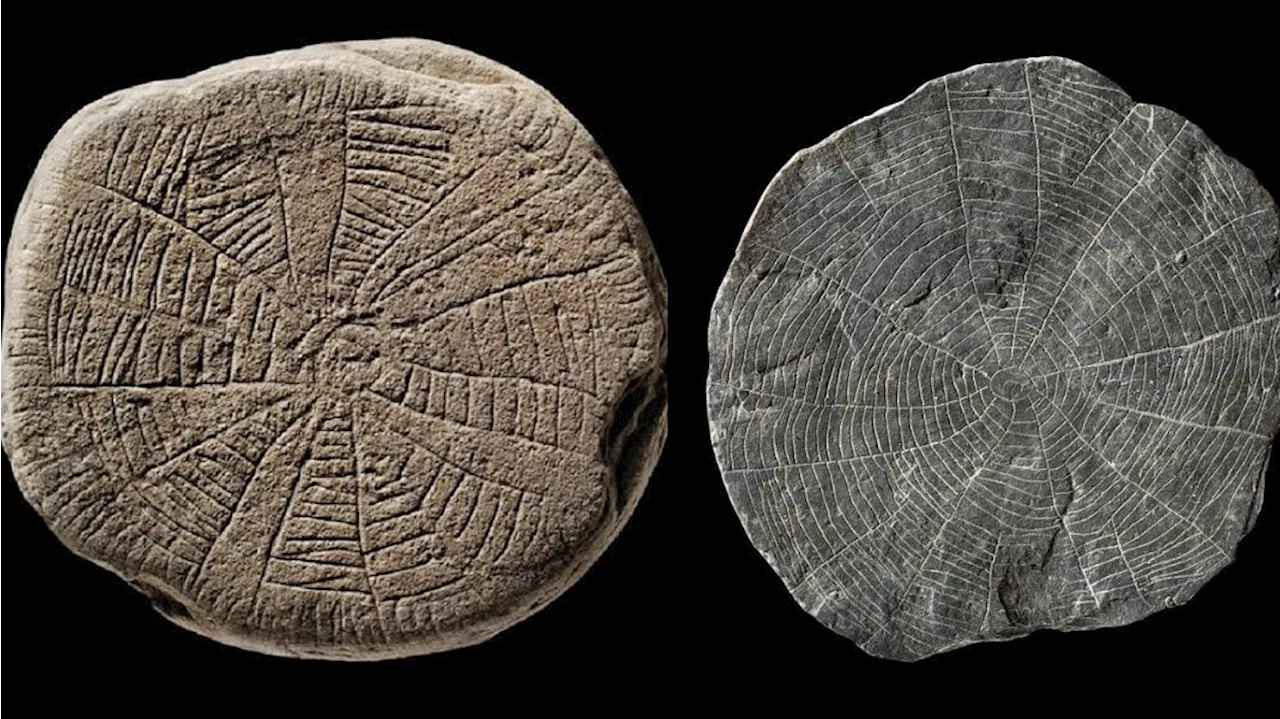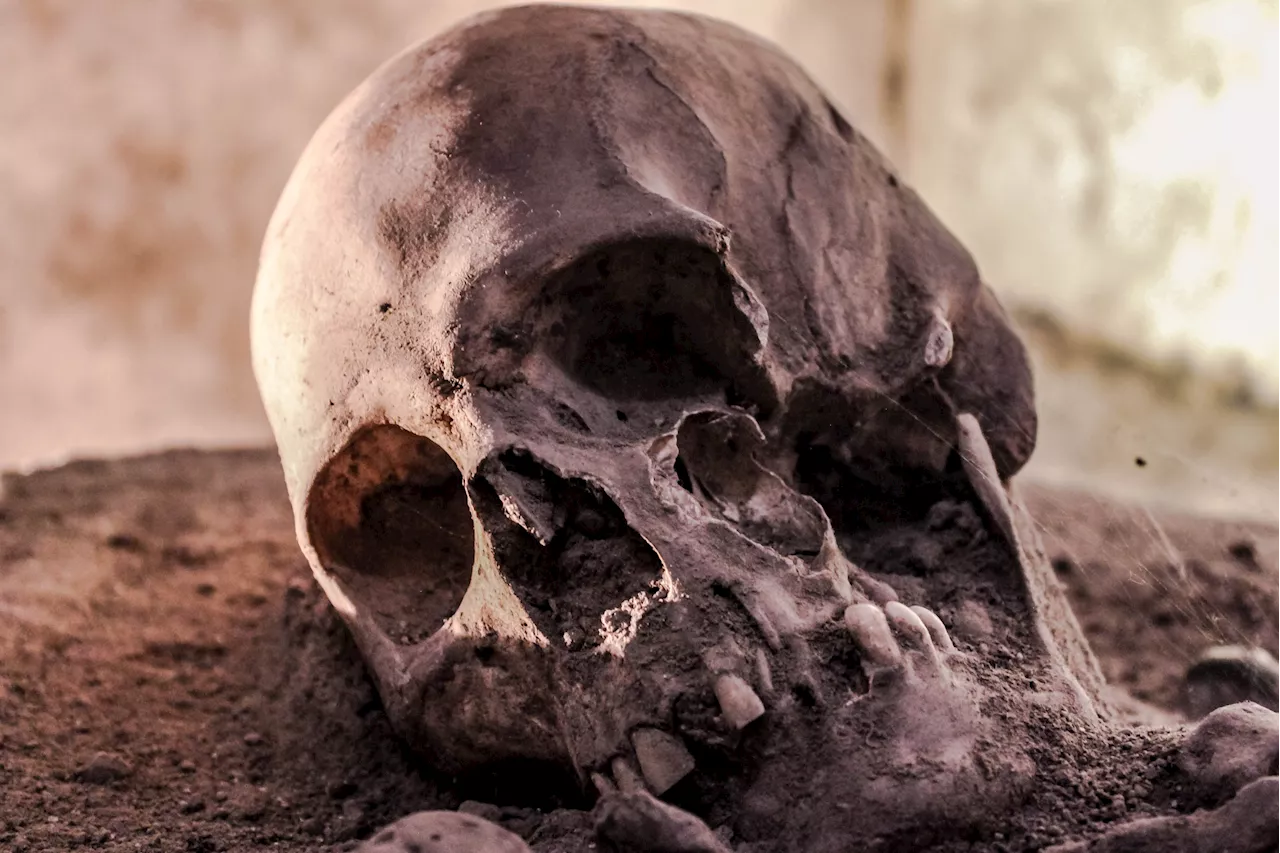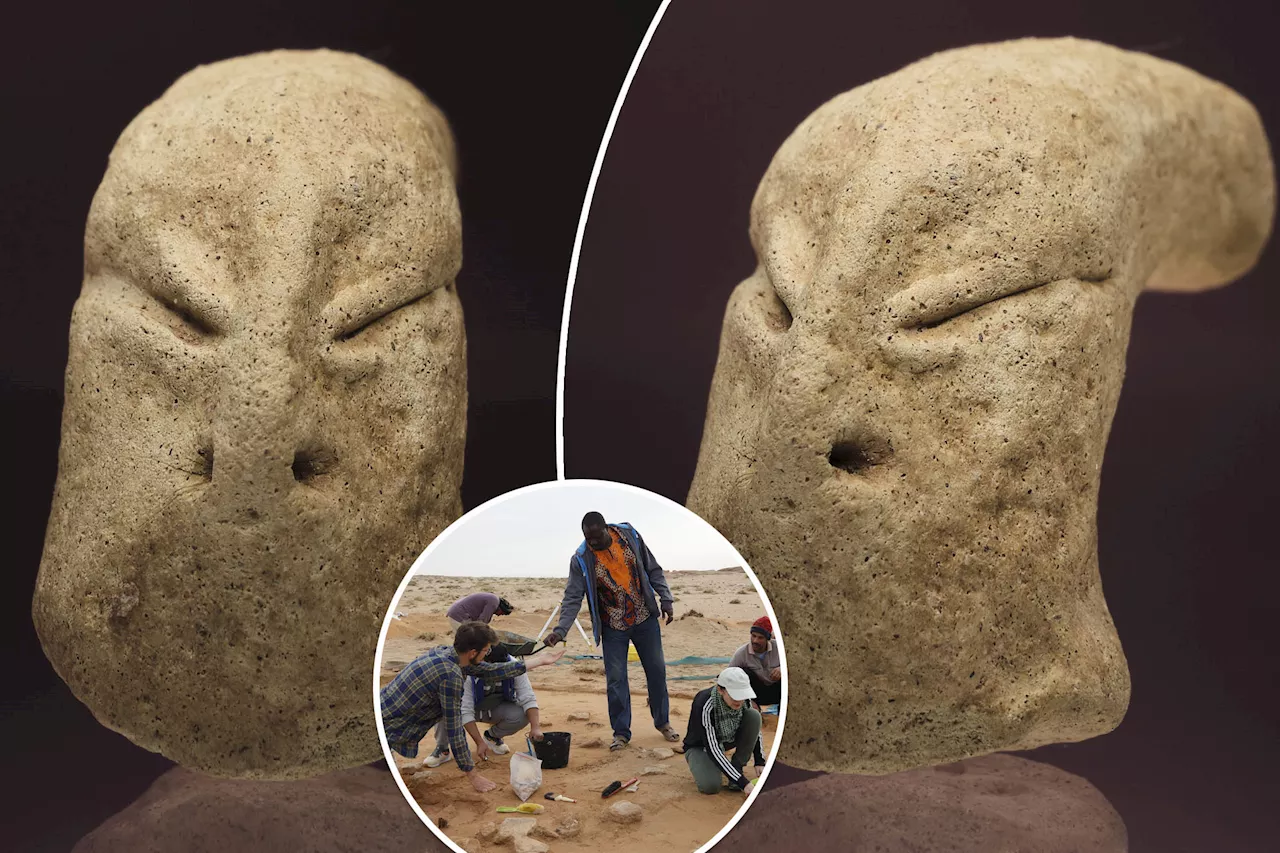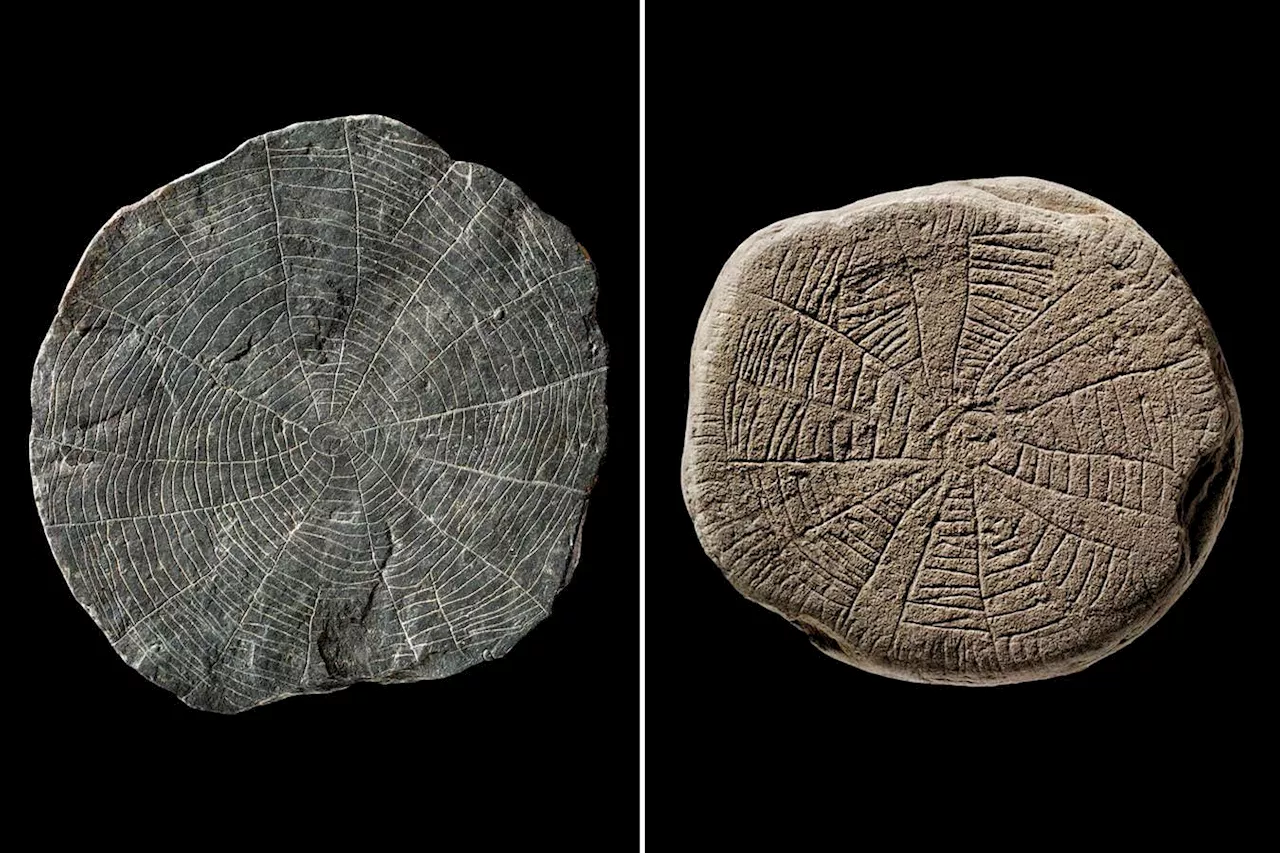Archaeologists uncover 614 sun stone carvings on the Danish island of Bornholm, dating back 4900 years. Analysis of ice cores suggests a volcanic eruption around 2900 BC, which may have caused a period of severe cooling and impacted the Neolithic people's agricultural practices. Researchers propose that the sun stone burial could have been a ritual to appease the sun god or a celebration after the skies cleared.
A remarkable discovery has shed light on the lives of Neolithic people on the Danish island of Bornholm , revealing their deep connection to the sun and their potential response to a catastrophic volcanic eruption some 4900 years ago. Archaeologists have unearthed a collection of 614 stone plaques and fragments adorned with decorative sun and plant motifs.
These artifacts were found buried in ditches surrounding enclosure structures, covered by a layer of stone pavement containing pottery and other objects. The pottery style aligns with the late Funnel Beaker culture, prevalent in the region from approximately 2900 to 2800 BC. Initially, it was theorized that the sun stone carvings were buried as a ritual to ensure bountiful harvests. The sun held immense significance for early agricultural societies in northern Europe. However, researchers posed a question: why were these sun images deposited all at once? Professor Iversen and his team discovered a compelling explanation: they analyzed data from ice cores drilled in Greenland and Antarctica and detected elevated levels of sulphate, a marker of volcanic eruptions, dating back to around 2900 BC. The ratio of sulphate deposition suggests the eruption occurred near the equator, and its effects likely spanned a vast geographical area. Ash clouds might have blocked sunlight, leading to a prolonged period of cooling. This period of severe climate change is corroborated by evidence from tree rings in Germany and long-lived bristlecone pines in the United States.The volcanic eruption would have been devastating for the Neolithic people of northern Europe. Without successful harvests, they faced the prospect of famine and an inability to plant crops for the following year. Iversen believes the burial of the sun carvings could have been a desperate attempt to restore sunlight or a celebration once the skies finally cleared. The researchers also acknowledge that the unique evidence from Bornholm might not represent a widespread phenomenon across southern Scandinavia. The island's abundant supply of slate, a hard stone suitable for carving, could explain why this practice was concentrated there. Other regions, predominantly composed of clay, may have lacked the necessary material for such carvings. Alternatively, cultural differences could have played a role, as island societies tend to develop unique practices and traditions due to their relative isolation.
Archaeology Neolithic Volcanic Eruption Sun Stones Rituals Funnel Beaker Culture Bornholm
United States Latest News, United States Headlines
Similar News:You can also read news stories similar to this one that we have collected from other news sources.
 Volcanic Eruption May Explain Neolithic Sun Stone BurialArchaeologists suggest a volcanic eruption in 2910 B.C. could have prompted Neolithic people on the Danish island of Bornholm to bury hundreds of decorated stones featuring sun and plant imagery.
Volcanic Eruption May Explain Neolithic Sun Stone BurialArchaeologists suggest a volcanic eruption in 2910 B.C. could have prompted Neolithic people on the Danish island of Bornholm to bury hundreds of decorated stones featuring sun and plant imagery.
Read more »
 Water and gruel -- not bread: Discovering the diet of early Neolithic farmers in ScandinaviaAt a Neolithic settlement on the Danish island Funen dating back 5,500 years, archaeologists have discovered both grinding stones and grains from early cereals. However, new research reveals that the inhabitants did not use the stones to grind the cereal grains. Instead of making bread, they likely prepared porridge or gruel from the grains.
Water and gruel -- not bread: Discovering the diet of early Neolithic farmers in ScandinaviaAt a Neolithic settlement on the Danish island Funen dating back 5,500 years, archaeologists have discovered both grinding stones and grains from early cereals. However, new research reveals that the inhabitants did not use the stones to grind the cereal grains. Instead of making bread, they likely prepared porridge or gruel from the grains.
Read more »
 Ancient Skulls Heap Reveals Unusual Ritual Practices in Neolithic ItalyA study of a prehistoric village in Italy reveals an intriguing ritual tradition involving the collection and use of human skulls spanning centuries.
Ancient Skulls Heap Reveals Unusual Ritual Practices in Neolithic ItalyA study of a prehistoric village in Italy reveals an intriguing ritual tradition involving the collection and use of human skulls spanning centuries.
Read more »
 NASA's Parker Solar Probe to Break Distance Record on Christmas EveNASA's Parker Solar Probe will make history on December 24th by reaching closer to the sun than any other man-made object. The probe, which has been orbiting the sun for six years, will come within 3.9 million miles of the sun's surface, providing valuable data to help scientists unravel the sun's mysteries.
NASA's Parker Solar Probe to Break Distance Record on Christmas EveNASA's Parker Solar Probe will make history on December 24th by reaching closer to the sun than any other man-made object. The probe, which has been orbiting the sun for six years, will come within 3.9 million miles of the sun's surface, providing valuable data to help scientists unravel the sun's mysteries.
Read more »
 NASA's Parker Solar Probe aims to fly closer to the sun like never beforeA NASA spacecraft is about to make the closest approach to the sun. The Parker Solar Probe was launched in 2018 to get a close-up look at the sun. On Tuesday, Parker will pass within a record-breaking 3.8 million miles of the sun’s surface. That's nearly seven times closer to the sun than previous spacecraft.
NASA's Parker Solar Probe aims to fly closer to the sun like never beforeA NASA spacecraft is about to make the closest approach to the sun. The Parker Solar Probe was launched in 2018 to get a close-up look at the sun. On Tuesday, Parker will pass within a record-breaking 3.8 million miles of the sun’s surface. That's nearly seven times closer to the sun than previous spacecraft.
Read more »
 7,000-year-old sculpture resembling an alien creature links Stone Age societiesArchaeologists have dug up something otherworldly that may help connect diverse ancient civilizations.
7,000-year-old sculpture resembling an alien creature links Stone Age societiesArchaeologists have dug up something otherworldly that may help connect diverse ancient civilizations.
Read more »
